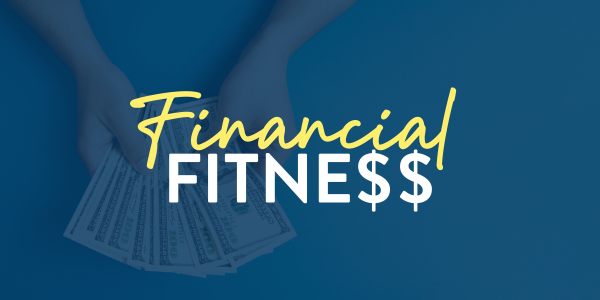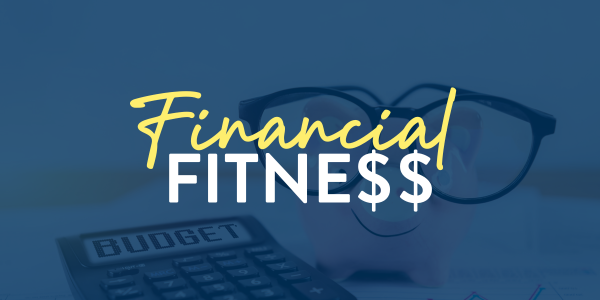
A couple of weeks ago, the Federal Reserve announced a hefty 50-point cut in the benchmark interest rate, which was bigger than the expected 25-point decrease. The Fed's decision to cut rates was mainly fueled by the decreasing levels of inflation, although shoppers are still faced with high grocery prices. It still remains to be seen if the rate cut will encourage more residential home sales, especially as other factors such as labor and economic data also affect real estate markets.

Hear from Elliot Eisenberg
Elliot Eisenberg, consulting economist for American Pacific Mortgage Corporation dropped a video recently just for our customers. He talks about the falling rate environment, what he's expecting to see rates do in the coming months, and how to take advantage of the market!
Home Financing
Why October's a Better Time to Buy
Fall is a great time to check out the changing foliage and get ready for fantasy football. It may also be a great time to shop for a home.
According to a recent Realtor.com report, the best time to buy a home is in early October. Checking out homes during the week of September 29 to October 5 should offer you the best combination of rising inventory and decreased competition in most markets, as buyer demand has been around 30% lower during the first week of October than during spring and summer.
The residential real estate market is especially active during warmer months, as many buyers want to find a new home before the school holidays end. This increases competition in the summer, which contributes to higher home prices and faster sales.
Other advantages to autumn shopping include a slower pace of sales. Since homes often spend more days on the market in October, you may have time to view several properties, compare their features, and take your time when preparing your offer.
However, buyers should be aware that market dynamics ultimately determine the cost of the home. If you're house-hunting in a hot market, fall may not offer as many advantages as those in cooler ones.
Source: money.com
Insurance
How AI Is Affecting Your Insurance
Artificial Intelligence (AI) is already improving our lives every day, at home and at work. AI is also being put to work by most insurance providers.
For example, claims processing—which can be a lengthy, inconvenient process that customers especially hate—is becoming a faster process with AI-powered tools. Instead of waiting weeks or months to receive the data required to make a decision, AI quickly delivers this data to claims adjusters. This means customers' lives can get back to normal faster, whether they've been waiting for home repairs or an automotive claim.
Policy renewals have also become simplified with AI. For example, you may have had to remind your homeowners insurance provider of recent, major improvements that made your home safer or less likely to be damaged by storms. Today's AI provides insurers with several tools to make renewals faster and more accurate. Also, consumers and business owners who shop for insurance online can acquire several quotes for new coverage or have their questions answered by an AI-powered chatbot.
However, AI isn't always on top of things. For example, consumer chatbots such as ChatGPT and Gemini are often unable to keep up with the changes in the insurance business and can't provide accurate answers due to lack of data. This has prevented a percentage of insurance firms from expanding their reliance on AI solutions. Also, AI has enabled scammers to create new security risks which some insurers have already encountered.
Source: grinnellmutual.com
In the News
How the Fed Rate Cut Could Help You Manage Debt
This week, Federal Reserve chairman and Deadhead Jerome Powell announced a 50-point cut to the benchmark interest rate. This was bigger than the expected 25-point cut and lowered the rate to 4.75% - 5%. When the central bank lowers its rate, borrowing typically becomes cheaper.
If you're one of the millions who survived the worst of the 2022-2023 inflation by using credit cards for everyday purchases, the Federal rate cut may have created some options to help you eliminate any card balances. This is even though credit card rates don't always fall that much following a Fed rate cut. (Credit card debt nationwide now sits at a record high of $1.14 trillion, which is equal to about $3,500 per person.)
One strategy to consider: debt consolidation.
This is usually in the form of a loan with a lower interest rate than your credit cards. In addition to the lower rate, you won't have to deal with future interest charges that keep bumping up your balances, making it especially difficult to pay them down. Shopping around for debt consolidation loans is well-worth it, especially as some lenders prioritize your income instead of relying on your credit score.
Equity-based borrowing is another potential strategy that the Fed's rate cut may improve.
If you're a homeowner, you may want to consider applying for a home equity loan or line of credit (HELOC), as these are typically offered at a lower interest rate than most credit cards and other unsecured debt.
Source: cbsnews.com
Credit and Consumer Finance
CFPB Puts Brakes on Unauthorized OD Fees
Recently, the Consumer Financial Protection Bureau (CFPB) published information regarding some financial institutions' charging overdraft fees based on "phantom" opt-in agreements. Phantom opt-ins occur when banks claim they have customers' consent to charge overdraft fees but can't produce proof that consent was obtained.
Under the Electronic Fund Transfer Act, banks cannot charge overdraft fees on ATM and one-time debit card transactions unless consumers have opted in.
When people withdraw money from an ATM or buy with a debit card, the transaction may cause their account balance to drop below zero. Their bank can either decline the transaction or permit it by extending an overdraft, which is only permitted if the customer opted into the overdraft service.
Over the past three years, the CFPB has acted against several institutions for charging overdraft fees to customers who hadn't opted in for them or weren't aware that an opt-in was legally required. In response to these actions, which resulted in hefty fines for several financial institutions, other banks reviewed their overdraft fee policies to ensure legal compliance.
Source: consumerfinance.gov
Did You Know?
Sneaky Ways to Lower Your Grocery Bills
While inflation has affected everyone during the past two years, shopping for groceries has become especially painful. This is because many grocery items' prices rose much higher than non-grocery buys.
However, if you're willing to spend an extra few minutes researching prices and substituting some items for others, you may be able to lower your grocery bills while enjoying some variety in your daily meals. In addition, some of the better-quality items in some categories, such as beef and pork, haven't seen as big a price increase as other items.
This "substitution hack" is possible when you check out the Bureau of Labor Statistics' database. Here's an example from the price survey database that shows price changes from July 2021 to July 2024:
- Butter, 28.5%, Margarine, 46.2%
- Fresh vegetables, 9.0%, Frozen vegetables, 21.6%
- Steak, 9.4%, Ground beef, 17.9%
- Bacon, 6.1%, Breakfast sausage, 16.0%
- Apples, -3.4%, Citrus fruits, 11.0%
- Pork roast & ribs, -0.9%, Pork chops, 9.8%
You can check out more Consumer Price Index (CPI) data by visiting the Bureau of Labor Statistics' Consumer Price Index page.
Another hack to keep in mind: when picking up common grocery items, check out the ones that are the hardest to see (usually they're on the lowest shelves). This is because retailers and grocery stores negotiate shelf placement, with stores charging retailers for the best shelves that are closer to shoppers' eye level. In turn, these retailers hike their prices to cover the costs of shelf placement.
Source: empower.com








